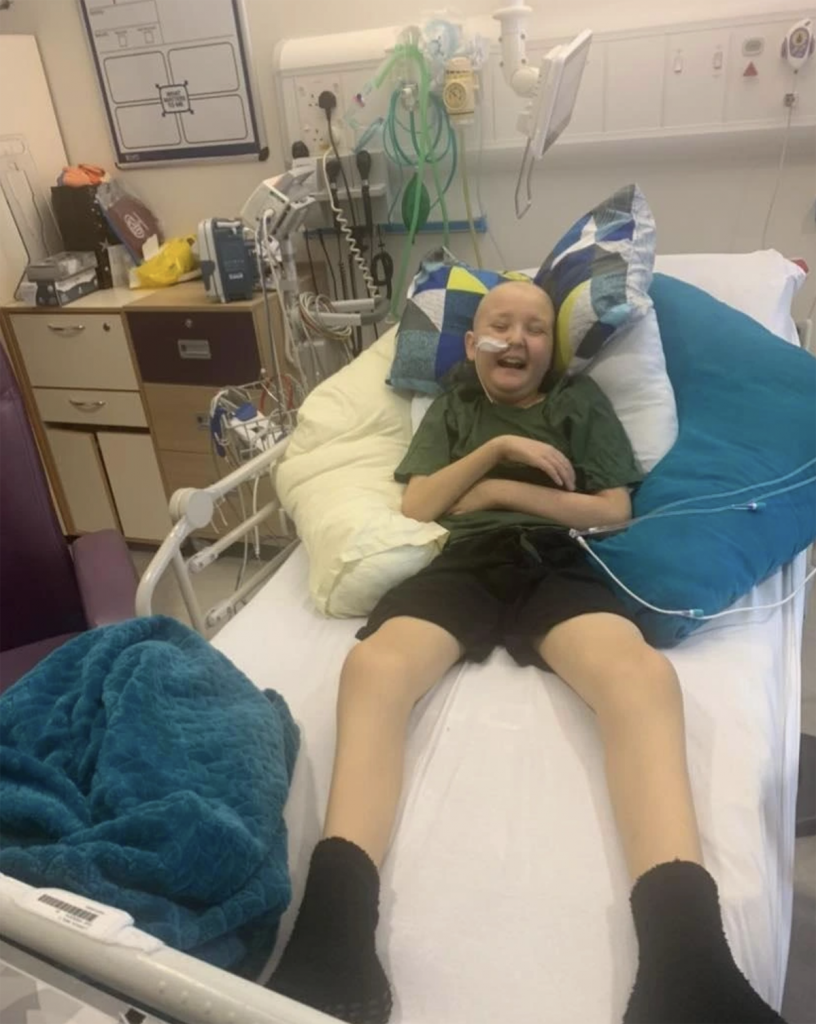Understanding ALL
- A young boy whose stomach pain turned out to be acute lymphoblastic leukemia, a rare form of the disease, is now back home and cancer-free.
- In general, acute lymphoblastic leukemia (also called ALL) is a cancer of the bone marrow. This cancer occurs when the bone marrow makes too many immature lymphocytes a type of white blood cell.
- The risk for developing ALL is highest in children younger than 5 years of age, and the risk declines until a person's mid-20s. However, the risk begins to rise again once a person reaches age 50.
Sharlene Cannon of Strathaven, South Lanarkshire, Scotland, says that in August 2021, she took her 11-year-old son, Mark, to the doctor after he began to have trouble breathing. The visit prompted a blood test, and while awaiting the results, he collapsed at school and was rushed to the hospital.
Read More"We were told it (the leukemia) was fast acting; in a matter of weeks, a child with this strain could die," she adds.
Little Mark was rushed back to the hospital once his parents received the news; he was struggling to walk and breathe. While at the hospital, an unfortunate chain of events began that almost cost him his life.
Getting Treatment
Once back at the hospital with a confirmed leukemia diagnosis, Mark was unable to leave for six weeks; he began aggressive chemotherapy sessions up to four times a week.
However, a catheter line inserted through Mark's neck to administer the chemotherapy became infected; it was a slippery slope from then on, nearly costing the young boy his life.
He developed deadly sepsis (the body's extreme response to an infection) and multiple organs began to fail. This caused parts of his brain to swell; he went blind for a period of time because of the swelling. His cancer treatment was also stopped as a result.

"We had all different specialists working with him to get it under control," Sharlene says. "He had weeks to live, we were told."
"It was horrendous," she continues. "The pressure on his brain was too much and it affected the part of the brain that dealt with his sight."
"He was kept in ICU for a few weeks, and hooked up to machines with about six lines coming out (of) him at once at one point. It was tough."
Sharlene says the family became concerned that Mark was not getting his cancer treatment; it was September 2021 when the treatment was stopped because of the infection, and October was quickly approaching.
But thankfully, Mark pulled through. And on Jan. 7, he was finally able to go home.
Mark's most recent test results show no trace of leukemia in his system, but he still goes to the hospital up to four times a week for treatment; this is done to ensure the cancer does not return.

Understanding Acute Lymphoblastic Leukemia
In general, acute lymphoblastic leukemia (also called ALL) is a cancer of the bone marrow. This cancer occurs when the bone marrow makes too many immature lymphocytes a type of white blood cell. These blood cells are critical to the immune system, as they help fight infections by attacking bacteria, germs and viruses.
What is Acute Lymphoblastic Leukemia (ALL)?
"ALL is a type of cancer that is very aggressive," Dr. Olalekan Oluwole, a hematologist at Vanderbilt University Medical Center in Nashville, Tenn., previously told SurvivorNet. "It grows very fast. Within a few weeks, a few months, the person will start to feel very sick. And that's why we will have to give it an equally aggressive type of treatment to break that cycle."
He says that many times, the leukemia rests in the bone marrow, and because it is an abnormal growth, it just keeps dividing.
"It doesn't follow rules, and it doesn't stop," he says. "Not only that, because this is part of the immune system, the immune system is sorta like the police of the body. So, those abnormal cells that have now become cancer, they have the ability to go to many places. They go into the blood, and they often go into the tissue or the lining around the brain."
"By the time somebody comes to us and they have ALL, we already assume that it has gone everywhere in the body, and we have to treat them like that," Dr. Oluwole adds.
All About Acute Lymphoblastic Leukemia: Answers to the Most Common Questions About the Disease
There are many symptoms of ALL to be on the lookout for, many of which Mark had experienced:
- Fatigue
- Feeling weak
- Feeling lightheaded or dizziness
- Shortness of breath or trouble breathing
- Pale skin
- Infections that do not go away or keep coming back
- Bruises (or small red or purple spots) on the skin
- Bleeding, such as frequent or severe nosebleeds, bleeding gums or heavy menstrual bleeding in women
It is important to know the symptoms, but remember that ALL is relatively rare. In fact, just 6,660 new cases of this disease are expected to be diagnosed this year in the United States.
The risk for developing ALL is highest in children younger than 5 years of age, and the risk declines until a person's mid-20s, according to the American Cancer Society. However, the risk begins to rise again once a person reaches age 50.
Questions to Ask Your Doctor
If you have received an ALL diagnosis, you probably feel overwhelmed and scared. To help organize your thoughts, here are some immediate questions you should ask your doctor.
- What type of ALL do I have? What does this mean for treatment options?
- Is there a cancer center or hospital that specializes in this type of cancer nearby?
- What additional tests are needed and what will these tests reveal?
- When can treatment begin and what do I need to do to prepare?
Learn more about SurvivorNet's rigorous medical review process.


